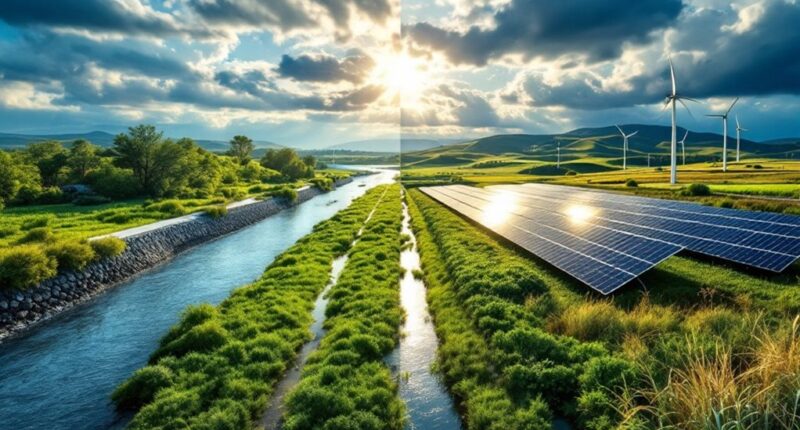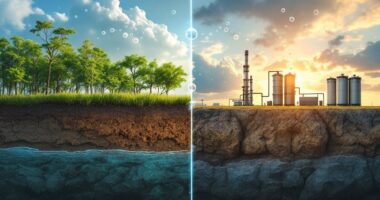Climate adaptation and mitigation tackle climate change from different angles. Adaptation adjusts to existing impacts—like building seawalls against rising tides—providing immediate, localized benefits. Mitigation addresses root causes by reducing greenhouse gas emissions through renewable energy and ecosystem restoration, requiring global coordination. Adaptation offers visible short-term results, making it politically attractive, while mitigation prevents catastrophic future scenarios. Both strategies work together like an umbrella during rain (adaptation) and fixing the roof beforehand (mitigation). The balancing act between them holds the key to effective climate action.

While the climate crisis demands urgent action on multiple fronts, policymakers and communities worldwide find themselves charting the complementary yet distinct paths of adaptation and mitigation. These two strategies represent different sides of the same climate-action coin, each essential but operating on different timelines and scales.
Adaptation—essentially climate change‘s version of “dealing with what’s already happening”—focuses on adjusting to current or expected climate impacts. Think of it as putting up an umbrella when it’s already raining. Communities build seawalls against rising tides, develop drought-resistant crops, and create urban green spaces to combat heat islands. These measures deliver immediate, localized benefits, providing vital protection for vulnerable populations experiencing climate effects today. As IFAW demonstrates, adaptation efforts can include prescribed fires to manage wildfire risks effectively in vulnerable ecosystems. Both carbon neutrality and adaptation are essential components of comprehensive climate action as established under the Paris Agreement framework.
Mitigation, meanwhile, is the long game. It targets the root cause of climate change by reducing greenhouse gas emissions. This is more like fixing the roof before the storm arrives. Shifting to renewable energy, improving energy efficiency in buildings, and restoring carbon-storing ecosystems all fall under this proactive approach. The transition to renewable sources represents one of the most impactful mitigation strategies available today. Unlike adaptation’s local focus, mitigation requires global coordination—after all, carbon dioxide doesn’t respect national boundaries.
The timeframes of these approaches create interesting tensions. Adaptation offers visible, immediate results—that flood barrier clearly protected homes during last week’s storm. Mitigation’s benefits, however, might not be apparent for decades. This temporal disconnect often makes adaptation more politically attractive, despite mitigation’s important role in preventing catastrophic future scenarios.
Economically speaking, adaptation tends to function as a private or local good, while mitigation operates as a global public good. This distinction creates challenges in resource allocation and responsibility. Who should pay for sea walls in Bangladesh when the emissions came from industrialized nations?
The climate challenge ultimately requires both strategies working in tandem—adaptation to manage unavoidable impacts and mitigation to avoid unmanageable ones. Like wearing sunscreen while also campaigning to repair the ozone layer, neither approach alone provides complete protection. The most effective climate action embraces this dual-pathway approach.
Frequently Asked Questions
Which Approach Is More Cost-Effective, Adaptation or Mitigation?
Neither adaptation nor mitigation is universally more cost-effective.
Adaptation provides immediate local benefits with every $1 invested potentially yielding $10 in economic benefits.
Mitigation requires higher upfront costs but prevents future damages and additional adaptation needs.
Their effectiveness varies by context, with adaptation offering quicker returns while mitigation delivers greater long-term value.
Experts increasingly recognize these approaches as complementary rather than competing strategies, with integrated approaches enhancing overall cost-effectiveness.
How Do Businesses Prioritize Between Adaptation and Mitigation Strategies?
Businesses prioritize between adaptation and mitigation strategies based on their specific risk profiles, industry contexts, and stakeholder expectations.
Companies typically assess immediate physical climate risks alongside long-term change opportunities, balancing short-term adaptation investments with mitigation commitments.
Many integrate both approaches into existing business processes, aligning them with corporate goals while seeking co-benefits like energy efficiency that serve dual purposes.
Regulatory requirements, investor pressure, and cost-benefit analyses also greatly influence these prioritization decisions.
Can Developing Nations Effectively Implement Both Approaches Simultaneously?
Developing nations can implement both adaptation and mitigation simultaneously, but face significant constraints.
Success stories from Brazil, China, and Mexico demonstrate it’s possible when leveraging synergies, like agriculture and nature-based solutions that serve both purposes.
International support through funds like the Adaptation Fund ($1.25 billion allocated) helps bridge resource gaps.
The key lies in finding co-benefits – mangrove restoration protects coastlines while sequestering carbon, effectively killing two climate birds with one strategic stone.
What Psychological Barriers Prevent Individuals From Supporting These Strategies?
Individuals often face a psychological obstacle course when confronting climate strategies. They struggle with cognitive limitations that make grasping long-term climate threats difficult, while ideological barriers create resistance to proposed solutions.
Social pressures maintain carbon-intensive lifestyles, creating a “why should I if others don’t?” mentality. Meanwhile, psychological defenses like denial and helplessness offer emotional shelter from the anxiety of confronting an existential crisis that demands personal change and collective action.
How Will Artificial Intelligence Impact Future Adaptation and Mitigation Efforts?
Artificial intelligence will revolutionize climate efforts by supercharging both adaptation and mitigation strategies.
AI systems will process massive climate datasets to deliver hyperlocal predictions, optimize renewable energy grids, and enhance early warning systems for disasters. These technologies will enable more precise climate modeling, accelerate materials science for carbon capture, and help communities prepare for climate impacts.
However, the high energy consumption of AI systems and potential to widen global inequalities remain significant challenges to address.









